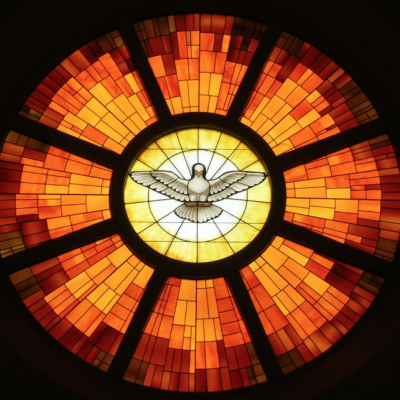by Jennifer Halteman Schrock
Our network of people who care about creation continues to inch upward. On May 30, the number of live emails broke 1,000. This does not include people who have joined us for a time over the past 10 years and then moved on or people who visit our website but do not receive our newsletter.
In my role as the leader of Mennonite Creation Care Network, I wondre what it means to be a network of people and congregations who don’t really know each other. Does it matter to you that your sister Green Patchwork congregation in Saskatoon, Saskatchewan, held a Buy Nothing Day? Can you feel the Spirit pulsing between the Emmanuel Mennonite Church in Gainesville, Florida, and the church that shares the same name in Abbotsford, British Columbia?
This month I heard a sermon that made me think that if I answer no to these questions, maybe I’m missing something. The speaker was John D. Roth, an Anabaptist historian who relates to Mennonite World Conference (MWC) in his role as the director of the Center for the Study of Global Anabaptism. Like our own organization, MWC is a loose, far-flung network. Its members are in 87 countries, and in North America alone, they include denominations ranging from Beachy Amish to Mennonite Church USA. They make our attempts at networking look simple.
For John, however, the struggle to be the Church beyond our own local bodies is absolutely essential to the work of Christian faith. Our identity as a global body of many diverse groups is rooted in the very birth of the Church at Pentecost. The miracle in this formative story involves intercultural communication: a shared gift of wind and flame joins people who likely had difficulty connecting. Christians are by definition a scattered group of people who speak different “languages.”
John also remarked on the human tendency toward idolatry. If our experience is confined to our local churches, it is easy to imagine that the image of God can only look like us. The body of Christ becomes limited to our favorite texts, buzz words, songs, ministries, recipes, language, culture and color of skin.
This left me pondering what the wind and flame of Pentecost and a caution against idolatry might mean for MCCN’s scattered groups who see creation care as part of their vocation. I suppose it means being able to recognize the language of the Holy Spirit in people whose efforts look different from our own. We have worked at this in various ways. Green patchwork–the name for our member congregations suggests a community with many colors and patterns. We’ve reflected on the diversity of gifts among us, in response to requests for guidance on this.
Embracing a Pentecost vision also means nurturing the connections between us. We do this by posting the list of Green Patchwork Congregations on our website so that churches can connect with each other. This year, we started encouraging shared practices such as a river clean-up this summer.
My Sunday encounter with the Global Church renewed my energy for this network. If it speaks to you as well, here are some things you might do in response:
- Share a creation care story with MCCN that you’re not sure fits the mold but you believe to be motivated by the Holy Spirit. For example, we don’t hear from many farmers or business leaders.
- Talk to someone at your church whose approach to caring for the earth looks different from your own.
- Look at the list of Green Patchwork congregations on our website and get to know folks at one of them.
- Use this article and the discussion questions below with your green committee or another kind of group.
Discussion Questions
- How has the Holy Spirit been part of your efforts to care for the earth? Do you have a Pentecost story to tell?
- What connections does your group need to avoid “green idolatry?”
